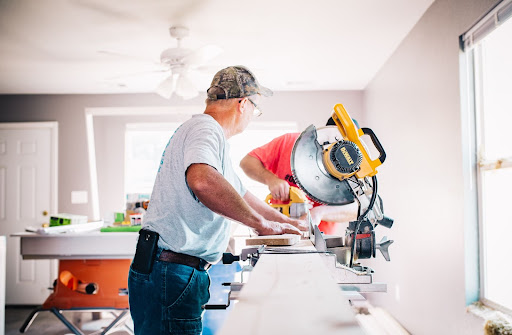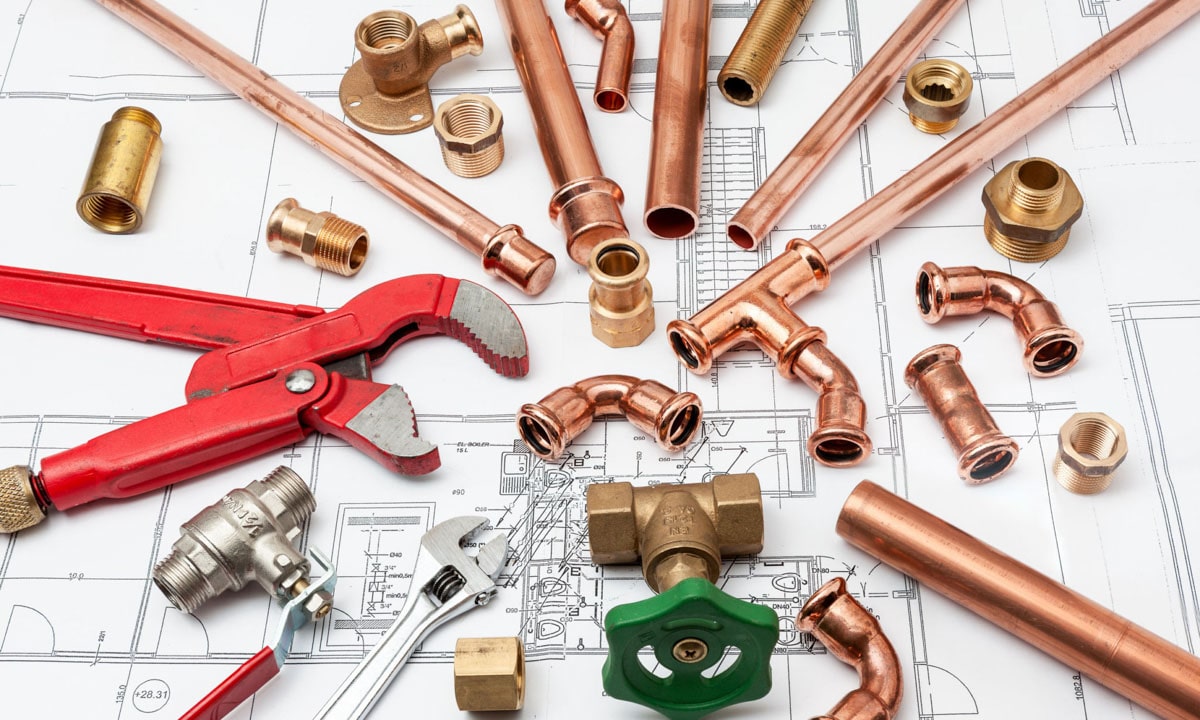Exploring the Next Era of Plumbing: Patterns and Innovations
Exploring the Next Era of Plumbing: Patterns and Innovations
Blog Article
We've uncovered this great article relating to The Future Of Plumbing: Trends And Technologies To Watch below on the net and think it made sense to write about it with you on this site.

Intro
The pipes market is undergoing a transformative stage driven by technical developments and expanding problems for sustainability and performance. This article discovers arising trends and technologies shaping the future of plumbing.
Smart Pipes Systems
Integrating clever technology right into plumbing systems allows remote surveillance, leak detection, and automated upkeep. Smart sensors and IoT (Internet of Things) gadgets enable homeowners and plumbing technicians to check water usage and discover issues in real-time, causing more efficient source management and proactive upkeep.
Water Effectiveness Solutions
With boosting emphasis on water conservation, ingenious options are being developed to minimize water wastefulness in pipes systems. High-efficiency fixtures, greywater recycling systems, and wise irrigation controllers are amongst the innovations assisting customers reduce their water impact while keeping comfort and convenience.
Sustainable Materials
The shift towards sustainability includes plumbing materials, with a growing choice for environment-friendly alternatives. Biodegradable piping materials, such as PEX (cross-linked polyethylene) and HDPE (high-density polyethylene), offer toughness and resistance to rust without jeopardizing environmental stability.
Predictive Maintenance
Anticipating upkeep techniques take advantage of information analytics and artificial intelligence formulas to prepare for and avoid plumbing problems before they take place. By analyzing historic data and efficiency metrics, anticipating maintenance algorithms can recognize patterns and abnormalities, allowing proactive treatments to prevent pricey repairs and disruptions.
Enhanced Truth in Plumbing
Enhanced Fact (AR) innovation is reinventing pipes by offering specialists with real-time visual guidance for fixing and fixing tasks. AR-enabled wise glasses or mobile applications overlay digital information onto the physical environment, helping plumbers imagine pipe formats, recognize surprise leakages, and implement repairs with accuracy.
Impact of 3D Printing
The introduction of 3D printing has presented new opportunities in producing plumbing elements. From custom-made components to complex pipeline fittings, 3D printing enables rapid prototyping and on-demand manufacturing, reducing lead times and making it possible for higher customization in pipes style.
Health and Safety Qualities
In reaction to increased worries for health and safety, pipes components are including features such as antimicrobial surfaces, touchless operation, and self-cleaning systems. These technologies not only boost health yet likewise advertise individual convenience and ease.
Hygiene-focused Components
Touchless faucets, self-sanitizing bathrooms, and antimicrobial surface areas are ending up being increasingly prevalent in property and business settings, minimizing the threat of germ transmission and advertising a cleaner, much healthier environment.
Water Top Quality Tracking
Improvements in water quality tracking modern technologies make it possible for house owners to monitor the purity and security of their water supply in real-time. Smart water high quality sensors can find impurities, pH degrees, and temperature variants, empowering customers to take positive steps to ensure water security.
Remote Plumbing Services
Remote diagnostics and digital aid are revolutionizing the way plumbing services are delivered. Through video clip conferencing and remote accessibility modern technologies, plumbers can fix concerns, offer guidance for do it yourself repairs, and even carry out remote inspections, using greater ease of access and benefit to homeowners.
Obstacles and Opportunities
While plumbing innovations hold immense pledge, they also existing difficulties such as information personal privacy issues, regulatory compliance, and the requirement for workforce training. Dealing with these obstacles requires partnership between industry stakeholders and regulatory bodies to guarantee risk-free and responsible execution of new technologies.
Regulative Landscape
Regulatory frameworks play an important duty in shaping the fostering of plumbing advancements, with criteria and codes regulating every little thing from water performance to product safety. As technologies remain to progress, regulatory bodies should adjust to ensure consumer protection and environmental stewardship.
Future Expectation
The future of plumbing is identified by proceeded innovation and assimilation with various other fields such as IoT, renewable energy, and building automation. By embracing sustainable techniques, leveraging emerging modern technologies, and prioritizing user-centric design, the plumbing industry is positioned to attend to the developing requirements of culture while lessening its environmental impact.
Conclusion
In conclusion, the future of pipes is defined by a merging of modern technology, sustainability, and user-centric design. By welcoming wise options, lasting products, and proactive maintenance methods, the pipes sector can improve efficiency, promote security, and contribute to a more lasting future.
The Future of Plumbing: Trends and Innovations to Watch
Introduction to Future Plumbing Trends
The future of plumbing is being shaped by several key factors, including technological advancements, environmental concerns, and changing consumer expectations. These factors are driving the development of new products, services, and practices that enhance the efficiency, sustainability, and convenience of plumbing systems.
Key Trends and Innovations in Plumbing
Smart Plumbing Systems: The integration of smart technology into plumbing systems is transforming the way we manage water usage and detect issues. Smart leak detectors, automated water shut-off valves, and smart faucets are just a few examples of how technology is enhancing plumbing systems. These devices provide real-time data and remote control capabilities, allowing homeowners to monitor and manage their water usage more effectively. Water Conservation and Efficiency: With increasing concerns about water scarcity, there is a growing emphasis on water conservation and efficiency. Innovations such as low-flow fixtures, greywater recycling systems, and rainwater harvesting are becoming more popular. Plumbers are adopting these technologies to help customers reduce their water consumption and save on utility bills. Sustainable Materials: The use of sustainable materials in plumbing systems is gaining traction. This includes the adoption of recyclable and biodegradable materials, as well as the use of non-toxic and eco-friendly products. Sustainable materials help reduce the environmental impact of plumbing systems and promote long-term sustainability. Energy-Efficient Water Heaters: Advances in water heating technology are leading to the development of more energy-efficient systems. Tankless water heaters, solar water heaters, and heat pump water heaters are becoming more prevalent. These systems offer significant energy savings and reduce the carbon footprint of homes and businesses. Trenchless Technology: Trenchless technology is revolutionizing the way plumbing repairs and installations are conducted. This method allows for the repair or replacement of pipes without extensive excavation, minimizing disruption and reducing costs. Techniques such as pipe bursting and cured-in-place pipe (CIPP) lining are gaining popularity. Health and Safety: The focus on health and safety is driving innovations in plumbing systems. Touchless faucets and fixtures, antimicrobial materials, and improved water filtration systems are being developed to enhance hygiene and protect public health. Plumbers are adopting these innovations to meet the growing demand for safer and healthier plumbing solutions. Remote Diagnostics and Monitoring: The ability to diagnose and monitor plumbing systems remotely is becoming increasingly important. Remote diagnostic tools and sensors allow plumbers to identify issues and perform maintenance without the need for on-site visits. This enhances efficiency and reduces the need for costly emergency repairs. Impact of Future Trends on the Plumbing Industry
Enhanced Efficiency: The adoption of smart technology and energy-efficient systems will enhance the efficiency of plumbing systems. This will lead to reduced water and energy consumption, lower utility bills, and improved performance. Sustainability: The focus on sustainability will drive the development and adoption of eco-friendly plumbing solutions. This will contribute to the conservation of natural resources, reduction of waste, and protection of the environment. Improved Customer Experience: The integration of technology and innovative solutions will improve the customer experience. Homeowners will have greater control over their plumbing systems, access to real-time data, and the ability to manage their water usage more effectively. Increased Demand for Skilled Plumbers: The adoption of new technologies and materials will require plumbers to acquire new skills and expertise. There will be an increased demand for skilled plumbers who are knowledgeable about the latest trends and innovations. Cost Savings: The use of efficient and sustainable plumbing solutions will result in cost savings for both homeowners and businesses. Reduced water and energy consumption, lower maintenance costs, and fewer emergency repairs will contribute to overall affordability. Preparing for the Future of Plumbing
Stay Informed: Keep up-to-date with the latest trends and innovations in the plumbing industry. Attend industry conferences, participate in training programs, and engage with manufacturers to stay informed. Invest in Training: Ensure that you and your team are trained in the latest technologies and installation techniques. This will enable you to offer cutting-edge solutions to your customers and stay competitive in the market. Promote Sustainable Solutions: Highlight the benefits of eco-friendly and energy-efficient plumbing solutions to your customers. Educate them about the advantages of adopting sustainable practices and products. Leverage Technology: Embrace smart technology and remote diagnostic tools to enhance your services. Offer remote monitoring and maintenance options to provide added convenience and value to your customers. Collaborate with Manufacturers: Partner with manufacturers of innovative plumbing products to gain access to the latest solutions and technical support. This can also provide opportunities for joint marketing efforts. Focus on Customer Education: Educate your customers about the benefits and functionality of new plumbing technologies. Provide guidance on how to use smart systems and maintain sustainable plumbing solutions. Conclusion
The future of plumbing is being shaped by exciting trends and innovations that promise to enhance efficiency, sustainability, and convenience. By staying informed and embracing these changes, plumbers can provide superior services to their customers and contribute to a more sustainable future. The adoption of smart technology, sustainable materials, and energy-efficient systems will drive the evolution of the plumbing industry, creating new opportunities and challenges. By preparing for the future, plumbers can ensure their success in a rapidly changing market.

I came across that blog entry on Innovative Plumbing Trends Transforming Construction when perusing the web. Remember to take a moment to share this blog entry if you enjoyed reading it. I love reading our article about The Future Of Plumbing: Trends And Technologies To Watch.
Book Now Report this page